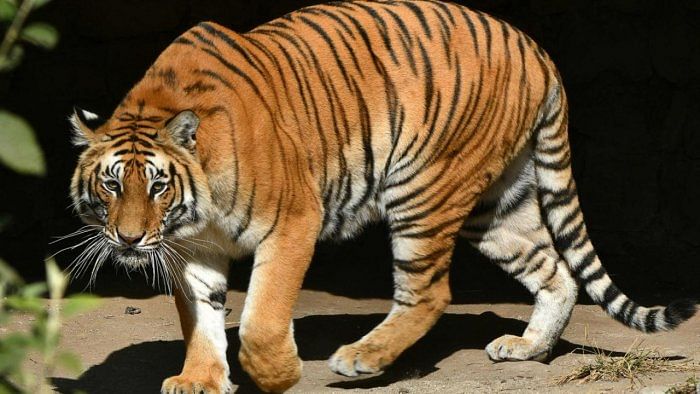
Tigers population in Karnataka has registered a significant growth, with the latest report by the Forest Department for the year 2020 estimating an increase of about 30 per cent in the number of big cats.
Data for the years 2021 and 2022 will be handed over to the National Tiger Conservation Authority (NTCA), which will put out the results soon, officials said.
Karnataka has five tiger reserves: Bandipur, Nagarahole, Biligiri Ranganatha Swami (BRT), Bhadra and Dandeli.
Unlike the Tiger Census conducted every four years, the monitoring survey looks at the tiger habitats in Karnataka as two landscapes, with ranges of the big cats crisscrossing state borders and across reserves.
The exercise is aimed at periodical assessment of the ground situation in the reserves and suggest interventions needed to fix any gaps in the management instead of waiting for four years to take action.
The southern landscape spread over Nagarahole-Bandipur-Wayanad-Mudumalai-Sathyamangalam-BRT was estimated to have 724 tigers while the population in the Mookambika-Anshi-Mhadei-Kudremukh-Bhadra landscape was estimated at 150.
As per the National Tiger Conservation Authority (NTCA) survey-2018, Karnataka had about 524 tigers, of which about 350 were counted inside the five reserves and the remaining ones spread across the protected areas of the state.
The latest report puts the number of tigers in the reserves at 403, with more tigers dispersing into the protected areas.
"We estimate that Karnataka had around 650-700 big cats during the study year (2020). Our focus, however, was on understanding the trend in the landscape rather than getting the exact number. The NTCA report, which should be out in some time, will anyway look into the unique tigers and provide state-specific numbers," a senior official said.
To a question, Additional Principal Chief Conservator of Forests Kumar Pushkar said the department will take up the exercise annually.
"Tigers need to be monitored regularly. The exercise is important because we have areas with high density that pose different challenges in each landscape," he said.
One of the trends noticed by the report was the increase in the density of tiger population in Bandipur, BRT and Kali reserves.
"Bandipur has seen an increase (10 per cent) in the density of tigers. The trend is evident from the increasing incidents of tiger conflict in the last three years," the report noted.
Pushkar said the department has begun working on the solutions for the tigers in Bandipur.